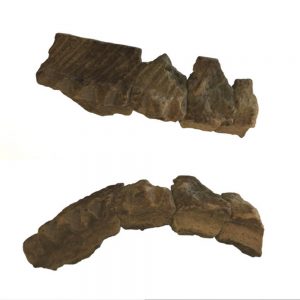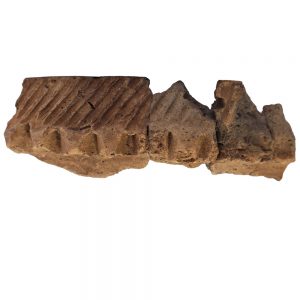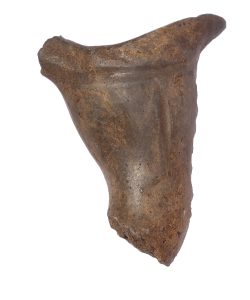Charity Site
Perhaps the most important new discovery of the Museum study was the Charity site. This site could provide important comparative data to explore the length of occupation of other Iroquoian sites in Ontario.
The recovery of glass beads that share chemical characteristics with those recovered from other sites suggest the villagers included Tionontaté refugees. The ceramic sample from one house contained numerous Genoa Frilled type vessels, once linked with the Wenro, who are known to have inhabited Ossossané, although there are problems with assuming that these vessel types are associated with the Wenro, whose homeland is unknown.
Charred and fractured human remains recovered in several longhouse posts of one of the houses were examined by Michael Spence. His results suggest evidence of cannibalism, which is also reported in the Jesuit relations.
The recovered artifact assemblage is typical of a late historic period site, and includes copper, brass, and iron implements; glass trade beads dominated by red circular and oval varieties; and ceramic pipes and vessels typical for the period. The absence of animal remains other than fish was noted and thought to be consistent with a record of famine.

Two images showing alternating sides of the reconstructed pottery fragment as seen in the linked video below.
View the full 3D model on Sketchfab. (This link is external and as a result may not conform to accessibility standards.)



